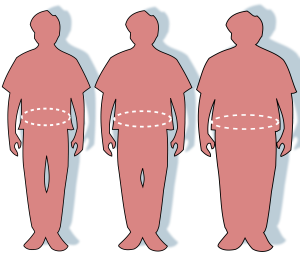The Power of Physical Activity: Reducing the Burden of Diabetes and Obesity
Table of Contents

Introduction
The prevalence of diabetes and obesity has reached epidemic proportions worldwide. According to the World Health Organization, there are over 400 million people with diabetes globally, and the number of people with obesity has tripled since 1975 [1]. Both conditions are major risk factors for cardiovascular disease and other chronic illnesses, and they can significantly reduce the quality of life and life expectancy [2].
However, the good news is that physical activity is a powerful tool in preventing and managing these conditions. Regular physical activity is associated with a reduced risk of developing diabetes [3] and can improve glycemic control in those with the condition [4]. Furthermore, physical activity is crucial for weight management and preventing and managing obesity [5].
Other Health Benefits of Physical Activity
Moreover, physical activity has a range of other health benefits, including improved cardiovascular health [6], reduced risk of chronic diseases [7], and enhanced mental health and well-being [8]. In short, physical activity is a critical aspect of overall health and well-being, and its importance cannot be overstated.
However, despite the numerous benefits of physical activity, many people still need help to incorporate it into their daily routines. This article aims to highlight the power of physical activity in reducing the burden of diabetes and obesity and provide tips on making physical activity a part of daily life. By following these tips, readers can improve their health, reduce the risk of chronic diseases, and enjoy a better quality of life.
In the following sections, we will discuss the link between physical activity and diabetes and obesity, the benefits of physical activity for overall health, and practical tips for incorporating physical activity into daily routines.
The link between physical activity and diabetes
Physical activity plays a critical role in the prevention and management of diabetes. Type 2 diabetes, in particular, is closely linked to lifestyle factors, including physical inactivity [1]. Studies have consistently shown that physical activity can reduce the risk of developing type 2 diabetes and improve glycemic control in those with the condition.
Several mechanisms may explain the protective effect of physical activity against diabetes. One of the most well-established mechanisms is the improvement in insulin sensitivity. Physical activity stimulates glucose uptake into the skeletal muscles, leading to a decrease in blood glucose levels and an increase in insulin sensitivity [2]. Regular physical activity also promotes weight loss, which improves insulin sensitivity and glycemic control [3].
Cohort Studies
A meta-analysis of 21 prospective cohort studies showed that physical activity is associated with a 26% lower risk of developing type 2 diabetes, independent of body mass index (BMI) [4]. The protective effect of physical activity appears to be dose-dependent, with higher levels of activity associated with a more significant reduction in diabetes risk. In addition, the type of activity also seems necessary, with aerobic exercise having a more substantial impact than resistance training [5].
Physical activity also plays an essential role in the management of diabetes. For individuals with type 2 diabetes, regular physical activity is recommended as part of the overall management plan [6]. Exercise can improve glycemic control, reduce the risk of cardiovascular disease, and improve overall quality of life. Physical activity has also effectively prevented or delayed the progression from pre-diabetes to type 2 diabetes [7].
However, there are some important considerations regarding physical activity and diabetes. Individuals with diabetes should consult with their healthcare provider before starting a new exercise program, particularly if they have complications such as neuropathy or retinopathy. Blood glucose levels should also be monitored closely during and after exercise, as physical activity can affect glycemic control [8]. In some cases, adjustments to medication or insulin doses may be necessary.
Physical activity is a powerful tool for preventing and managing diabetes. Regular physical activity can reduce the risk of developing type 2 diabetes and improve glycemic control in those with the condition. However, it is essential to consult with a healthcare provider before starting a new exercise program and to monitor blood glucose levels closely during and after exercise.
The link between physical activity and obesity
Physical activity is a crucial component of weight management and is essential for preventing and managing obesity. A sedentary lifestyle and lack of physical activity are major risk factors for obesity, a significant public health concern worldwide [1].
Physical activity helps in weight management by increasing energy expenditure and promoting using stored body fat for energy. Exercise also promotes muscle development, which increases the resting metabolic rate and helps to burn calories even when at rest [2]. The amount and intensity of physical activity required to achieve weight loss or prevent weight gain depend on various factors, including age, sex, and baseline activity levels.
A systematic review and meta-analysis of 45 randomised controlled trials showed that physical activity interventions effectively achieved weight loss and prevented weight gain in adults [3]. The study found that physical activity interventions, such as aerobic exercise, resistance training, or a combination of the two, resulted in a mean weight loss of 1.21 kg compared to a control group. The effectiveness of physical activity in achieving weight loss is further supported by a meta-analysis of 14 studies, which found that aerobic exercise alone resulted in a mean weight loss of 1.66 kg [4].
How Physical Activity Prevents Weight Gain
Furthermore, physical activity can help to prevent weight gain and maintain weight loss over the long term. A study of 32,000 men and women in the United States found that individuals who maintained a high level of physical activity over 20 years had a lower risk of obesity than those who were inactive or engaged in low activity levels [5]. Another study showed that regular physical activity was associated with a lower risk of weight regain in individuals who had previously lost weight [6].
It is worth noting that physical activity is just one aspect of weight management and should be combined with a healthy diet for optimal results. A balanced, calorie-controlled diet rich in fruits, vegetables, whole grains, and lean protein is essential for weight loss and vegetables, whole grains and lean protein are necessary for weight loss and weight management [7].
In summary, physical activity is a critical component of weight management and is essential for preventing and managing obesity. Regular physical activity can help achieve weight loss, prevent weight gain, and maintain weight loss over the long term. However, physical activity should be combined with a healthy diet for optimal results.
The benefits of physical activity for overall health
Physical activity has numerous benefits for overall health beyond preventing and managing diabetes and obesity. Regular physical activity has benefits, including improved cardiovascular health, reduced risk of chronic diseases, and enhanced mental health and well-being.
Regular physical activity is essential for cardiovascular health. Exercise strengthens the heart and improves circulation, reducing the risk of heart disease, stroke, and other cardiovascular conditions [1]. Furthermore, physical activity has effectively managed hypertension, a significant risk factor for cardiovascular disease [2].
Physical activity also has a protective effect against chronic diseases. A systematic review and meta-analysis of 27 prospective cohort studies found that physical activity is associated with a reduced risk of several types of cancer, including breast, colon, lung, and endometrial cancer [3]. In addition, physical activity is associated with a reduced risk of osteoporosis, cognitive decline, and depression [4,5].
Physical Activity for Mental Health
Furthermore, physical activity has a positive impact on mental health and well-being. Exercise has been shown to reduce symptoms of depression and anxiety and improve overall quality of life [6]. Physical activity promotes social connections and enhances self-esteem and confidence [7].
The benefits of physical activity are not limited to adults. Children who engage in regular physical activity have improved bone health, cardiovascular fitness, and motor skills [8]. Physical activity also plays a critical role in the prevention of childhood obesity and the development of healthy habits that can last a lifetime.
In summary, physical activity has many health benefits, including improved cardiovascular health, reduced risk of chronic diseases, and enhanced mental health and well-being. Regular physical activity is essential for people of all ages and can promote healthy habits that last a lifetime.
Tips for incorporating physical activity into daily routine
Incorporating physical activity into daily routines can be challenging, but it is essential for achieving the health benefits discussed in the previous sections. Here are some tips for making physical activity a regular part of your daily routine:
- Start slowly: If you are new to physical activity, gradually increasing your activity level over time is essential. This can help prevent injury and ensure that physical activity becomes a habit.
- Find activities you enjoy: The best way to stick with physical activity is to find activities you want. Whether it’s walking, cycling, dancing, or swimming, choose activities that you look forward to and that fit into your lifestyle.
- Set realistic goals: Goals can help you stay motivated and on track. Start with small goals and progress to larger ones over time. For example, aim to walk for 10 minutes a day and gradually increase to 30 minutes or more.
- Make physical activity part of your daily routine: Incorporate physical activity into your daily routine by taking the stairs instead of the elevator, walking or cycling to work or school, or taking a walk during your lunch break.
- Use technology to track your progress: A fitness tracker or smartphone app can help you track your progress and stay motivated. Set goals, track your activity level, and celebrate your achievements.
Incorporating physical activity into daily routines can help improve overall health and well-being. The key is to find activities that you enjoy, and that fit into your lifestyle. By starting slowly, setting realistic goals, and making physical activity a regular part of your daily routine, you can achieve the health benefits of physical activity.
Conclusion
In conclusion, physical activity is a powerful tool for reducing the burden of diabetes and obesity and promoting overall health and well-being. Regular physical activity is effective in preventing and managing diabetes, reducing the risk of obesity, and improving cardiovascular health, among other benefits. However, many people need help incorporating physical activity into their daily routines.
By starting slowly, finding enjoyable activities, setting realistic goals, making physical activity a regular part of daily routines, and using technology to track progress, individuals can make physical activity a regular habit and achieve the health benefits it offers. Combining physical activity with a healthy diet is vital for optimal results.
With the growing prevalence of diabetes and obesity worldwide, promoting physical activity as a critical component of prevention and management strategies is essential. By increasing awareness of the benefits of physical activity and providing resources and support for individuals to incorporate it into their daily routines, we can help reduce the burden of these chronic conditions and promote overall health and well-being.
References
- World Health Organization. Obesity and Overweight.
- Centers for Disease Control and Prevention. Diabetes. Accessed on April 24, 2023. https://www.cdc.gov/diabetes/basics/diabetes.html.
- Gill JMR, Cooper AR. Physical activity and prevention of type 2 diabetes mellitus. Sports Med. 2008;38(10):807-824. doi: 10.2165/00007256-200838100-00002. https://pubmed.ncbi.nlm.nih.gov/18803434/
- Colberg SR, Sigal RJ, Fernhall B, et al. Exercise and type 2 diabetes. Diabetes Care. 2010;33(12):e147-e167. doi: 10.2337/dc10-9990. https://pubmed.ncbi.nlm.nih.gov/21115758/
- Swift DL, Johannsen NM, Lavie CJ, Earnest CP, Church TS. The role of exercise and physical activity in weight loss and maintenance. Prog Cardiovasc Dis. 2014;56(4):441-447. doi: 10.1016/j.pcad.2013.09.012. https://pubmed.ncbi.nlm.nih.gov/24438736/
- Warburton DER, Nicol CW, Bredin SSD. Health benefits of physical activity: the evidence. CMAJ. 2006;174(6):801-809. doi: 10.1503/cmaj.051351.https://pubmed.ncbi.nlm.nih.gov/16534088/
- Lee IM, Shiroma EJ, Lobelo F, Puska P, Blair SN, Katzmarzyk PT. Effect of physical inactivity on major non-communicable diseases worldwide: an analysis of burden of disease and life expectancy. Lancet. 2012;380(9838):219-229. doi: 10.1016/S0140-6736(12)61031-9.
- Craft LL, Perna FM. The benefits of exercise for the clinically depressed. Prim Care Companion J Clin Psychiatry. 2004;6(3):104-111








